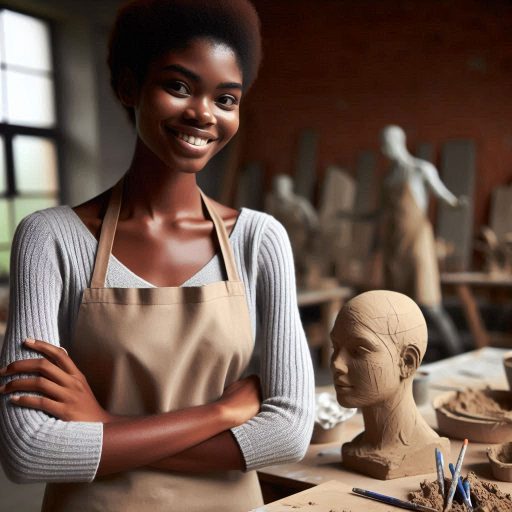Introduction
Printmaking editions and proofs are crucial aspects of the printmaking process.
Printmaking editions refer to the number of prints produced from a single image.
Proofs are trial prints made before the final edition, used to make adjustments.
Understanding editions and proofs in printmaking ensures consistency and quality across all prints.
It also helps in determining the value and authenticity of a print.
Printmakers use editions to limit the number of prints available, creating exclusivity.
Proofing allows artists to make corrections and adjustments before finalizing the edition.
Printmaking editions and proofs offer insight into the artist’s process and intention.
By understanding these aspects, viewers can appreciate the craftsmanship and effort behind each print.
Difference between editions and proofs
In printmaking, editions are the total number of identical prints produced. Proofs are trial impressions used for review.
Various types of editions in printmaking
- Open editions: Unlimited prints produced.
- Limited editions: Set number of prints produced, each signed and numbered by the artist.
Types of proofs in printmaking
- Trial proofs: Used for corrections before final printing.
- Artist’s proofs: Reserved for the artist’s personal collection.
The purpose of each type of edition and proof
Open editions allow for mass distribution of prints. Limited editions are exclusive and collectible.
Trial proofs ensure quality control. Artist’s proofs are valuable and rare.
Read: Printmaking Residencies and Scholarships
Overview of the Printmaking Process
Printmaking is an artistic process that involves creating artwork by transferring ink onto paper or another material through a printing press or other methods.
It requires skill and precision to achieve the desired results.
How Editions and Proofs are Created During the Printmaking Process
Editions are multiple copies of the same artwork created by the artist or under their supervision.
Proofs are trial prints made to test colors, alignments, and other elements before the final edition is produced.
Editions and proofs use techniques such as etching and lithography.
They also involve screen printing and other methods.
Artists often number and sign each print in an edition to indicate its authenticity and limited quantity.
Transform Your Career Today
Unlock a personalized career strategy that drives real results. Get tailored advice and a roadmap designed just for you.
Start NowImportance of Consistency and Quality Control in Creating Editions and Proofs
Consistency ensures that each print in an edition is identical in terms of color, clarity, and overall quality.
Quality control measures help artists maintain the integrity of their work and meet the expectations of collectors.
By carefully monitoring the printmaking process, artists can avoid errors and produce high-quality editions and proofs.
Establishing a quality control process is essential for artists who want to create professional and collectible prints.
Read: Collaborative Projects in Printmaking
Delve into the Subject: Internship Opportunities for Furniture Design Students
Factors that affect the value of a printmaking edition or proof
Common factors that affect the value of a printmaking edition or proof
- Edition size: Limited editions are more valuable than open editions.
- Signatures: Hand-signed prints are typically more valuable than unsigned ones.
- Condition: Prints in mint condition with no damage or discoloration are more valuable.
- Provenance: Prints with a documented history of ownership by reputable collectors or galleries can increase value.
- Rarity: Prints from a small edition size or those by well-known artists are more valuable.
Tips for collectors on how to differentiate between editions and proofs
- Editions: Numbered prints within a specific edition size identified by the artist.
- Proofs: Prints created before the final edition to check for errors or make adjustments.
- Artist proofs: Special prints kept by the artist for their personal collection.
- Printer’s proofs: Prints used to review the quality of the final edition.
- Bon ‘ tirer proofs: Approved prints used as a reference for the final edition.
Common misconceptions about printmaking editions and proofs debunked
- Myth: Higher edition numbers equal lower value.
- Reality: Edition size and artist reputation affect value.
- Myth: All prints are created equal.
- Reality: Editions, proofs, and variants have different values.
- Myth: Proofs are less valuable than editions.
- Reality: Some proofs can be highly sought after by collectors.
- Myth: Only numbered prints have value.
- Reality: Unnumbered prints can still be valuable depending on the artist.
- Myth: Editions with more signatures are better.
- Reality: Quality and condition matter more than quantity of signatures.
Read: Exploring Career Opportunities in Art and Design

Explore Further: Top Product Design Companies to Work For
Examples of famous printmaking editions and proofs in art history
Famous printmaking editions and proofs in art history
- Albrecht D‘rer’s “Melencolia I”
- Rembrandt van Rijn’s “The Three Crosses”
- Pablo Picasso’s “La Femme qui Pleure”
- Andy Warhol’s “Marilyn Monroe”
- Elizabeth Peyton’s “Kurt Cobain”
Impact of editions and proofs on the art market and art collecting
- Limited editions add scarcity value
- Artists can create multiple versions
- Collectors may seek rare proofs
- Prices can vary based on edition
- Editions can appreciate in value over time
How understanding editions and proofs can enhance appreciation of printmaking as an art form
- Provides insight into the artist’s process
- Shows variations in color and texture
- Demonstrates the skill of the printmaker
- Highlights the importance of authenticity
- Offers a deeper understanding of art history
Read: Printmaking Techniques: Etching and Engraving
Conclusion
Understanding printmaking editions and proofs is essential for art enthusiasts and collectors.
Recap of Key Points Discussed
- Editions refer to a set of prints produced from a single plate.
- Proofs are trial prints used to perfect the image before the final edition.
- Different types of proofs include artist’s proofs, printer’s proofs, and more.
- Edition numbers and markings indicate the size of the edition and the authenticity of the print.
Call to Action
Art lovers and collectors should research printmaking editions and proofs.
They can also experience it firsthand to deepen their knowledge.
Understanding the nuances of printmaking can enhance your appreciation for this art form and help you make informed decisions when acquiring prints for your collection.
Dive into the world of printmaking editions and proofs to expand your understanding and enjoyment of this fascinating artistic process.




